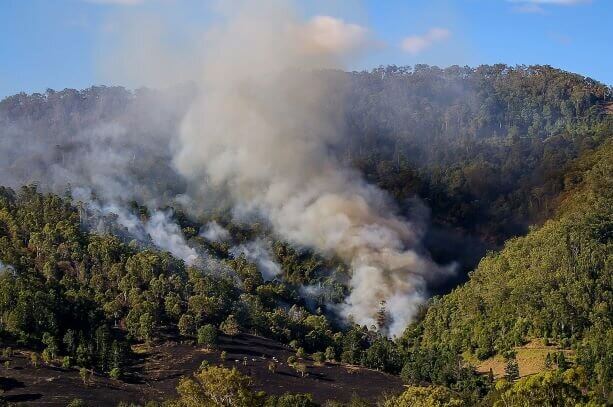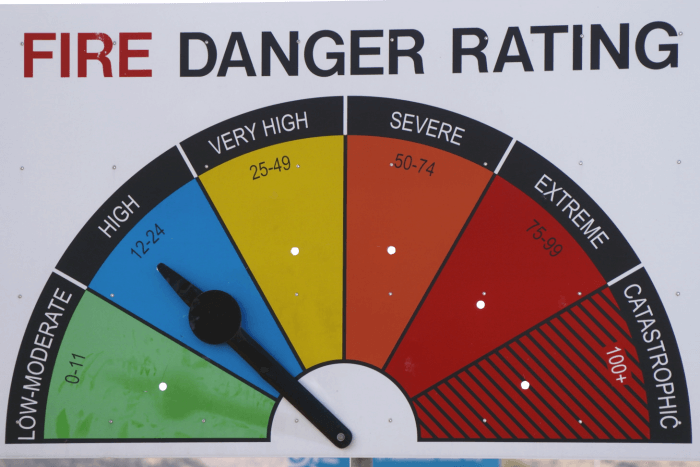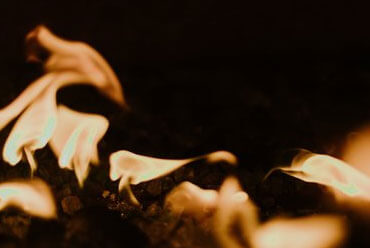There’s nothing new about bushfires in Australia.
But the experts say the latest outbreaks of fires raging around NSW (and Qld) are different – marked by their unprecedented unpredictability.
In NSW, a ‘catastrophic’ fire warning was issued for the first time since the highest- level caution was invented a decade ago.
The fires have also ignited debate around climate change, backburning and emergency response resources. Despite the attention that’s surrounded the current bushfire crisis there are no simple solutions since the causes of fires and how quickly they can spread is complex.
So too are the various warnings and categories we hear being broadcast on social media and our radios each day, with no end in sight to the destructive blazes.

Image by sandid from Pixabay
In this article I’ll give you a quick overview of:
- a) some of the causes of fire;
- b) how fires spread;
- c) the penalties for deliberately lighting a fire;
- d) a summary of the fire warnings and what they mean;
- e) what you can and can’t do on fire ban days; and
- f)the penalties that apply iff you break the rules.
Causes of fire in NSW
While we usually associate “the bushfire season” with the onset of warmer weather and high temperatures, the leading causes of fires in NSW are:
- Lightning – 38%
- Arson or suspicious causes -18%
- Yep. It’s hard to believe but almost 20% of bushfire are deliberately lit.
What causes fire to spread so quickly?
There are a range of factors that contribute to how quickly a fire will spread, including:
- Wind
- Temperature
- Fuel load
- Topography – fire burns more quickly travelling uphill than downhill
- Orientation of the landscape – slopes that face west are hotter and drier than those that face south
- Vegetation – plants on western slopes are more fire tolerant while the vegetation on south facing slopes are less flammable but also less fire tolerant
You can find more ‘fire facts’ here.
For fires near you follow the NSW Rural Fire Service link:
https://www.rfs.nsw.gov.au/fire-information/fires-near-me
And for Fire Danger Ratings in your area, check the Bureau of Meteorology:
http://www.bom.gov.au/nsw/forecasts/bushfire.shtml
What are the penalties for deliberately lighting a fire?
There are tough penalties for intentionally causing a fire or being “reckless as to the spread of fire”.
The maximum penalty is 21 years’ gaol.(Crimes Act s203E)
However, most offences fall under the Rural Fires Act.
Discarding a cigarette or “fire risk object”
It is an offence to throw away a cigarette or match or similar (“fire risk object”) “on any land”, even if it doesn’t cause a fire. This carries a maximum fine of $5,500.
If the offence is committed on a day where a total fire ban has been imposed the fine doubles to a maximum $11, 0000 (s99A).
There are a number of exceptions and clarifications re who is liable. You can find them in the Acthere.
Setting fire or causing fire
It is an offence to set fire or cause fire to land or property owned by another person (or the government or local council etc). This includes situations where you’ve allowed fire to escape from your property to another person’s land or property and which might cause injury or damage to the other person, their land or property or the land or property owned by the government/council etc (s100).
The on the spot fine is $2,200.
If you go to court, the penalty is a maximum fine of $110,000 or 5 years gaol or both.
If there’s a total fire ban the penalty increases to a maximum fine of $132,000 or 7 years gaol or both.
There are also penalties for leaving a fire in the open air without putting it out completely.
For a penalty notice offence the fine is $2,200.
If you go to court, the maximum fine is $5,500 or 12 months gaol or both.
You can see more details about that in s100 of the Acthere.
What are Fire Danger Ratings?
You’d have to be living under a rock not to have seen or heard various fire danger warnings or ratings over the past few weeks.
Fire danger ratings are designed to give people living or working in fire prone areas advice about what action they should take if a fire is in their area or if a fire was to start in their area.

If you’re a city slicker like me, generally you don’t need to pay much attention. But if you’re travelling out of town you really need to check, especially during summer. And if you live in a fire prone area, you will already know this stuff but I’ll put it here just in case.
The Fire Danger Ratings are issued by the Rural Fire Service and the Bureau of Meteorology. There are six ratings:
- Catastrophic
- Extreme
- Severe
- Very high
- High
- Low moderate
The ratings take into account predicted conditions such as temperature, humidity, wind and the dryness of the landscape. The higher the fire danger rating, the more dangerous the conditions.
For example, if you or your home/business is in an area with a Catastrophic Fire Danger Rating the warning is:
- For your survival, leaving early is the only option
- Leave bush fire prone areas the night before or early in the day – do not just wait and see what happens
- Make a decision about when you will leave, where you will go, how you will get there and when you will return.
- Homes are not designed to withstand fires in catastrophic conditions so you should leave early.
So it’s pretty clear right?
By contrast the last three – very high, high, low moderate the advice is:
- Review your bush fire survival plan with your family.
- Keep yourself informed and monitor conditions.
- Be ready to act if necessary.
You can see the advice for each of the Fire Danger Ratings here.
What about Total Fire Bans?
I live in the city, do they apply to me?
The short answer is yes.
A Total Fire Ban Order prohibits the lighting, maintenance or use of any fire or class of fire in the open air for the period or periods specified in the order.
Generally, during a Total Fire Ban you cannot:
Light, maintain or use a fire in the open
Carry out any activity in the open that causes, or is likely to cause, a fire
Perform ‘hot’ work in the open such as welding, grinding or gas cutting or any activity that produces a spark or flame
What about BBQ’s?
On a Total Fire Ban day in your area (or sometimes statewide):
Any BBQ or woodfire pizza oven etc that uses solid fuel, such as wood, charcoal or heat beads, cannot be used outsideElectric BBQs and gas BBQs are OK as long as there’s a responsible adult taking control of the BBQ at all times and there’s no combustible (flammable) material within 2 metres of the BBQ at any time when it’s onFor gas BBQs you also need to have an immediate and continuous supply of water AND the BBQ must be within 20 metres of a permanent building eg. a houseBBQs within designated picnic areas where the appliance is approved by Council, National Parks or State Forest are OK
What are the penalties for lighting a fire during a Total Fire Ban?
If you light a fire on a Total Fire Ban Day you could receive an on the spot fine of $2,200.
If the matter goes to court, you could be receive a fine of up to $5,500 and/or 12 months gaol.
Penalties for a fire that escapes and damages or destroys life, property or the environment during a Total Fire Ban can attract much greater fines and gaol terms with maximums at $132,000 and/or 5 years gaol.
Civil law suits can also be brought against the person responsible for a fire by those seeking compensation for losses sustained.
Fire Permits
Fire permits are suspended on days of total fire ban.
See more about permits here.
For information about No Burn days click here.
If you’ve been charged with arson, lighting or causing a fire, call me on 0444 580 187 for a free initial consultation
-ENDS-

